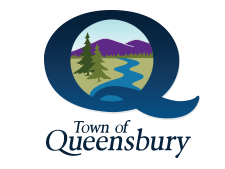Water Treatment FAQ’s
No, since we began testing in 1993 there has been no measurable contamination found. We conduct routine testing of our raw, clarified and finished water on a quarterly basis. Results are given as less than the lowest limit that can be detected by current methods. At this time that is 0.02 ug/l or less than two-hundredths of a part per billion. The current mcl (maximum contaminant level) as determined by the EPA is 0.5 ug/l or five-tenths of a part per billion.
Possibly the hot water tank needs to be flushed of sediment that settles in the bottom of the tank. When the hot water is discolored but the cold water is clear, then the Water Department recommends flushing the hot water tank. If the cold water is discolored, then it may be another issue.
Another reason for dirty water could be an abnormal condition has occurred that can disturb sediment or rust in the pipes. Examples of these occurrences are; using hydrants for firefighting, illegal use of hydrants, a water main break, power interruptions at the treatment facility that cause immediate changes to the system hydraulics.
During the month of May, the annual program of water main & hydrant flushing may cause water discoloration and low water pressure.
The water discoloration does not mean it is not safe to drink or bathe in. It is not pleasing to the eye. If you notice discolored water, then we recommend not washing laundry until the system settles and the water is clear.
To effectively control water quality within the distribution system.
EPA regulations are becoming more stringent and the Water Department needs to optimize its distribution system so that these future regulations can be complied with. Soda Ash (Sodium Carbonate) is added to the water as part of the water treatment process to adjust the pH of the water in order to meet the requirements of the Lead and Copper Rule. The Rule requires water suppliers to condition the water such that lead, present in solder before the mid 1980’s, and, to a lesser extent, copper does not leach into the consumer’s tap water.
Soda Ash (similar to household baking soda) pulls out some organics and color out of the water, and this colored carbonate precipitate deposits on the pipe walls. This deposit (and a pH of 8) aids in helping protect household plumbing from leaching lead and copper. This build up on our large distribution and transmission water mains, however, may lead to water quality issues such as bacteriological issues and intermittent, nuisance dirty water issues in areas with old unlined cast iron pipes.
The Water Department employs a best management practice known as unidirectional flushing. Unidirectional flushing uses high velocity water to remove this soda ash deposit from our larger pipes allowing our disinfectant, chlorine, to maximize its ability to control possible pathogen intrusion and lessen discolored water occurrences throughout the year particularly in areas where old unlined cast iron remains. Unidirectional flushing is a cost‐effective way of improving and preserving water quality in the distribution system. This annually takes place in the month of May.
If you have drawn water during the annual flushing period, then it is recommended to flush the hot water tank after the water mains and hydrants in your neighborhood have been flushed.
There are no plans to expand the Treatment Plant at this time.
We currently have about 9,000 service connections in the Queensbury Water District that serves over 20,000 people.
We also serve the Village of Hudson Falls, a portion of the Town of Moreau and a portion of the Town of Kingsbury.
The cloudy water you have noticed is probably dissolved air.
To check if this is true, draw a glass of water from the tap and let it sit. If the water in the glass starts to clear from the bottom up it is a result of the air being released. In the colder months, the water leaving our treatment plant is saturated with oxygen. As the water warms up in your home the oxygen is released.
A condition exists where there is unconfirmed or possible microbiological contamination. The “advisory” is issued as a precautionary measure.
A boil water order is issued when there has been confirmed microbiological contamination. The water should be brought to a full or “rolling” boil for at least 1 minute. You will be notified when the emergency condition no longer exists.
The rated capacity of the plant is 15 Million Gallons Per Day.
We have a 1000kw generator that allows us to produce about twelve million gallons per day during power outages.
The hardness of our water is approximately 1 grain per gallon or about 17 milligrams per liter. Our water is considered “soft”.
Our average daily output is about five million gallons.
Our maximum daily output has been ten and one half million gallons.
The source of our drinking water is the Hudson River at the Sherman Island Dam on Corinth Road in Queensbury, New York.
It is estimated that a minimum of 900 million gallons of water flows by our intakes every day.



